So you’ve just seen Sinners and are now obsessed with historical horror. You can’t stop thinking about the intersections of race, racism, religion, gender, colorism, and colonization. Your mind randomly wanders back to moments from the film, derailing you from whatever other activity you were doing. The soundtrack and original score are on repeat. You’ve seen it again and again, marveling more and more each time at Ryan Coogler’s filmmaking prowess. What do you do now?
Well, if you’re me, you head to your local independent bookstore and public library and stock up on books. What follows is a list of 20 books that hit on themes or vibes from Sinners. These should tide you over until your next screening.
Kindred by Octavia E. Butler (1979)

We’re starting off with a classic of American literature by one of the greatest speculative fiction writers of all time. It’s 1976 when Dana first gets sucked back in time. Pulled from her white husband in California to the antebellum South, she encounters her ancestors, Black and white, face to face. The more she’s thrown into the past, the more entangled her life becomes. This is a horror novel that isn’t a horror novel; the terror is rooted in the real history of slavery and what our ancestors went through.
Beloved by Toni Morrison (1987)
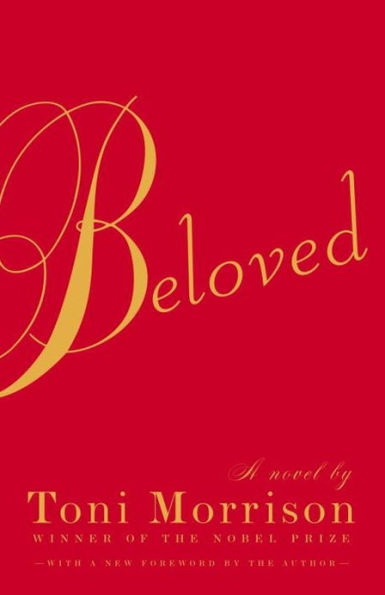
Another classic from another literary powerhouse that defies genre conventions. Sethe lives free in Ohio after the Civil War, but her past still haunts her… literally. The spirit of her dead infant torments her and her family in the form of a young woman calling herself Beloved. Like Sinners, it takes a community to fight the dark force haunting Sethe. This is one of the few books over the years I’ve read that I cannot reread. It’s too powerful, too heartwrenching, too… too… everything.
My Soul to Keep by Tananarive Due (1997)

Tananarive Due isn’t known as the Queen of Black Horror for nothing. The daughter of civil rights activists has been writing speculative fiction since 1995. This was her second novel and the first of the African Immortals series. David is a 400-year-old blood-drinking African immortal. He’s seen slavery and freedom, Africa and America. As the bodies pile up, his new human wife Jessica is offered a choice between a terrible death and an endless afterlife.
Bonus rec: The Reformatory (2023) about two Black teens in Jim Crow Florida encountering haints in a violent juvenile detention facility.
Dead Man’s Gold and Other Stories by Paul Yee, illustrations by Harven Chan (2001)

There’s not much in terms of fiction, horror or otherwise, centering on the first wave of mostly Cantonese Chinese immigrants who arrived at Gold Mountain (aka San Francisco) starting in the 1850s, but this is one of the greats. Set in Canada, it follows several Chinese immigrants moving east over the course of a century. Ghosts, spirits, and folklore feature prominently.
Skin Folk by Nalo Hopkinson (2001)
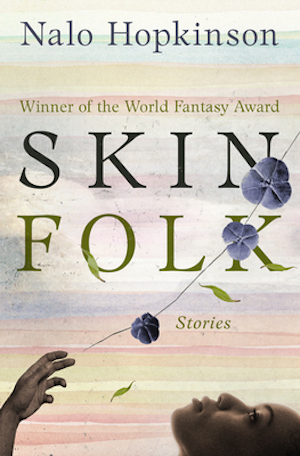
Speaking of literary goddesses. This collection of 15 short stories by Nalo Hopkinson features Afro-Caribbean folklore. Like Kindred and Beloved, this is a brutal, intense book. The stories expose the truth of a person, much like Remmick’s aw-shucks charm giving way to sharp fangs and culture-stealing. We even get a vampire-like blood drinker, a soucouyant, in “Greedy Choke Puppy.”
The Ballad of Black Tom by Victor LaValle (2016)
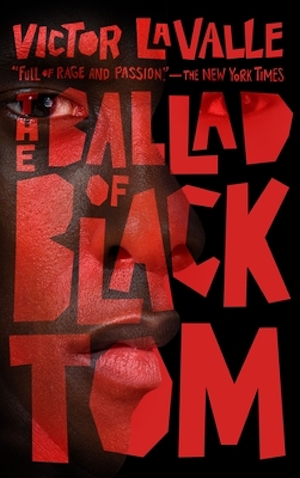
Charles Thomas Tester stumbles into the plot of HP Lovecraft’s The Horror at Red Hook in this novella set in 1920s Harlem. Suydam hires him to perform at a party, and after a racist interaction with Detective Malone, he agrees. When his father is murdered by cops, he takes the moniker Black Tom and starts working for Suydam. Then he discovers power so great and horrific, not even he can say no.
Bonus rec: Lone Women (2023) about a Black woman in the early 20th century who flees to Montana seeking freedom, a monster following in her wake, with hints of Beloved in the subtext.
The Underground Railroad by Colson Whitehead (2016)
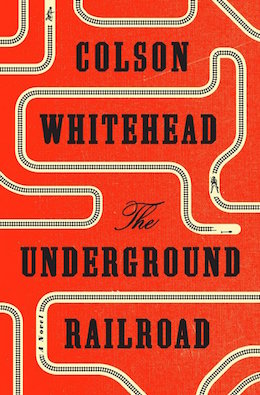
Although published as literary fiction, this is really alternate history with science fiction elements. Cora, enslaved on a Georgia plantation, escapes with Caesar and heads north on a literal underground railroad. They visit South Carolina where the racism is less explicit but just as heinous. Cora keeps running, the slave catcher Ridgeway hot on her tail. Her journey takes her from one hell to another as she searches for freedom.
Dread Nation by Justina Ireland (2018)
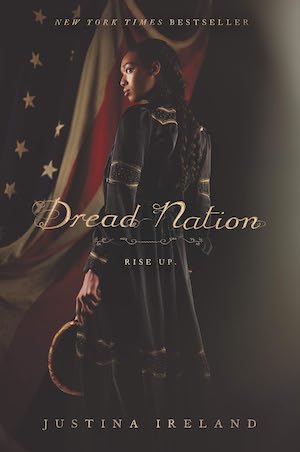
In this alternate history, what stops the Civil War isn’t Robert E. Lee surrendering at Appomattox but the dead soldiers rising from their graves. Several decades later, Jane and her sometime nemesis Katherine are in training to become Attendants, highly skilled in combat to protect their wealthy (and white) clients from shamblers. When they’re sent west to Kansas as punishment, they discover that emancipation doesn’t mean much when they can still be forced into slavery by another name. Passing features prominently in this book.
Ring Shout by P. Djèlí Clark (2020)

When Remmick had everyone dancing in a circle around him as he sang “Rocky Road to Dublin,” it reminded me of a ring shout. This book, set in Georgia a few years before Sinners, is about Maryse and her group of sharpshooters who battle an invasion of demons called Ku Kluxes. Maryse is backed up by elders using magic channeled through ring shouts. They’re the only thing standing between Klan demons and saving the world.
When the Reckoning Comes by LaTanya McQueen (2021)

Mira, a Black school teacher, left her segregated hometown years before, but when her estranged white friend Celine invites her to her plantation wedding, Mira reluctantly agrees. The former tobacco plantation now rakes in the cash as an Old South theme park, much to her horror. There are antebellum-themed cocktails and slavery reenactments with local Black residents playing the part of enslaved people. Mira just wants to catch up with old friends, including Jesse, who was arrested for murder years before, but the spirits of the slaves who died at Woodsman Plantation are restless… and angry.
House of Hunger by Alexis Henderson (2022)
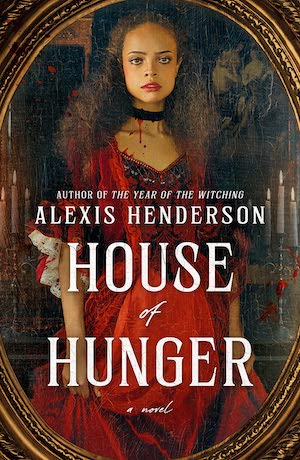
In the land of Prane, Marion is yanked from obscurity by Countess Lisavet, the head of the House of Hunger, an ancient, powerful family. As a bloodmaid, Marion keeps the house—and Lisavet’s bed. Her new home is a hedonistic one, full of lust and blood and enough court intrigue to keep her on her toes. Lisavet craves Marion’s blood and will do anything and everything to her new hire to get it.
Jackal by Erin E. Adams (2022)

Liz returns to her predominately white hometown in Pennsylvania for the wedding of her white friend and her Black fiance, but things go from bad to worse when the bride’s biracial daughter disappears in the woods. Only Liz remembers this has happened before, 15 years before to Keisha, who turned up brutally murdered, and to other Black girls who no one bothered investigating. Johnstown’s racism is dragged to the forefront as Liz investigates the murders.
The Weight of Blood by Tiffany D. Jackson (2022)

Maddy Washington is biracial, but no one knows. Her white father forces her to pass as white. When the truth is revealed, so are Maddy’s powers. Another white classmate, Wendy, convinces her Black quarterback boyfriend to ask Maddy to prom as a way to force the school to integrate the event, but another group of white girls are plotting a Carrie-esque attack. What happened on prom night? Only Maddy knows the truth. A young adult horror deep dive into the perils of passing.
Out There Screaming edited by Jordan Peele and John Joseph Adams (2023)

Some of the biggest names in Black speculative fiction appear in this stunning anthology. The 19 authors herein explore the best of Black horror. In Sinners, Ryan Coogler uses horror to peel back the layers of reality and expose the bones that built this world, the racism and the races, the enslavement of the body and the freeing of the mind. Out There Screaming does much the same thing. It is horror with as much depth as it has scares.
Vampires of El Norte by Isabel Cañas (2023)
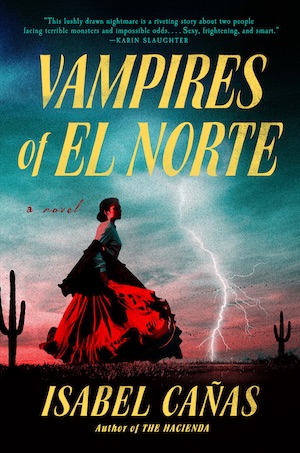
Nena’s family has been dealing with encroaching Anglos her whole life growing up on the border between Texas and Mexico. As a child, she’s attacked by a monster, and her best friend and crush Néstor blames himself. The two are reunited after the start of the Mexican-American war in 1846. Now it’s not just white American men invading their homeland. Something monstrous has followed them. Readers who were drawn to the romantic elements in Sinners should definitely pick this up.
The Black Girl Survives in This One edited by Desiree S. Evans and Saraciea J. Fennell (2024)
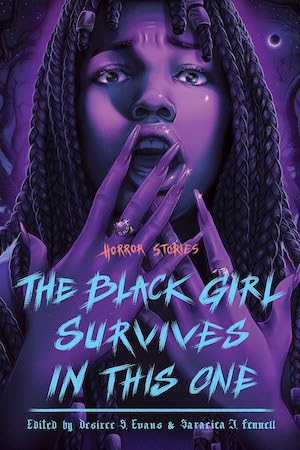
Like Out There Screaming, this YA short story collection covers a wide-range of horror tropes, settings, and concepts. The common thread running through each of these stories is that the Black girl gets to be the final girl, the one who emerges at the end of the horror movie covered in blood but alive. There’s a little something for everyone here.
Dead Girls Walking by Sami Ellis (2024)

How about a YA horror with a grumpy antihero and a demon serial killer? Temple’s father is the notorious North Point Killer. Or is he? She schemes her way into a horror-themed camp in the woods near the now-abandoned home where she grew up. She’s determined to prove her dad murdered her mom despite his claims to the contrary. And that’s when campers start going missing. I won’t spoil the big reveal, but the consequences of racism play a big part.
The Buffalo Hunter Hunter by Stephen Graham Jones (2025)

In 2012, an academic discovers the 100-year-old journal of her ancestor, a Lutheran minister. The story then jumps to Arthur Beaucarne’s journal as he records his encounters with a Blackfeet named Good Stab. We also get Good Stab’s perspective of his life after being turned into a vampire. What follows is a bloody, vicious, and unflinching look at the mythical “wild wild west,” from the people and animals who were massacred to the gleeful sadists who did the massacring. Good Stab is out for revenge and has all the time in the world to get it.
The Haunting of Room 904 by Erika T. Wurth (2025)

Although is set in the present, it also flashes back to the mid-1860s. It also touches on similar themes from the movie, particularly colonization, assimilation, and the desperate need to connect to a culture, your own or one you’ve stolen from someone else. Olivia is a paranormal investigator who mostly spends her time exorcizing spirits from haunted objects. A series of strange incidents puts her in contact with vengeful spirits, including a victim of the Sand Creek Massacre. Another spirit has targeted her mother for death, five years after driving her sister to suicide. As the threads intersect and pull tight, Olivia is caught in the middle of the web.
Blood Slaves by Markus Redmond (2025)

This book isn’t out yet as of the publication of this list, but I couldn’t not include it. Rafazi is a vampire from Ghana, the last of his kind. He tempts a slave, Willie, into becoming his ally and raises an army of blood slaves hellbent on taking revenge on their cruel master. As with My Soul to Keep, the love of a spouse stands in the way of an immortal enacting his vengeance.
Looking for more vampire books by Black authors? Don’t worry, I gotchu.

